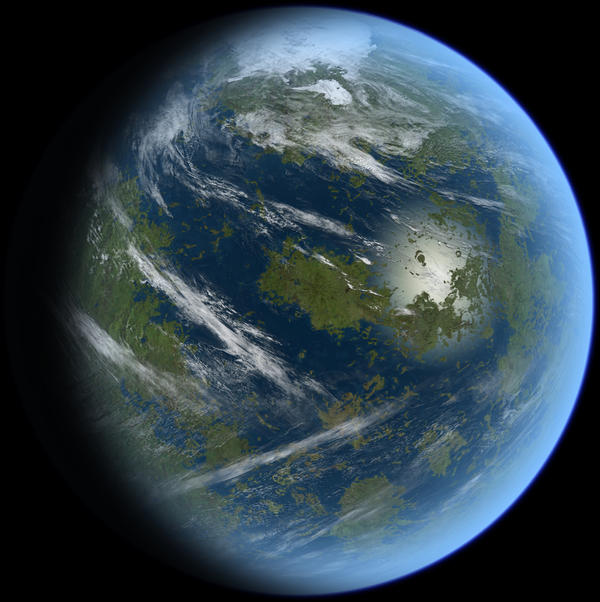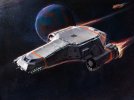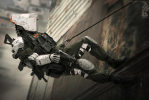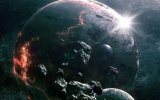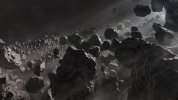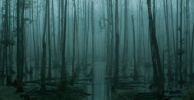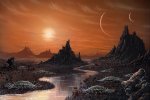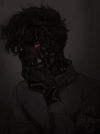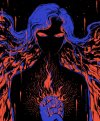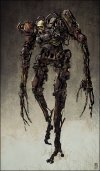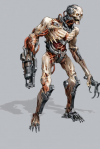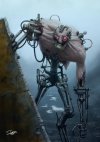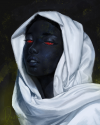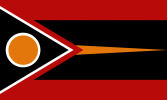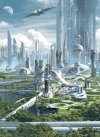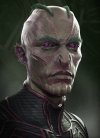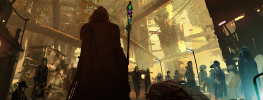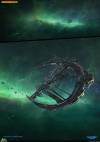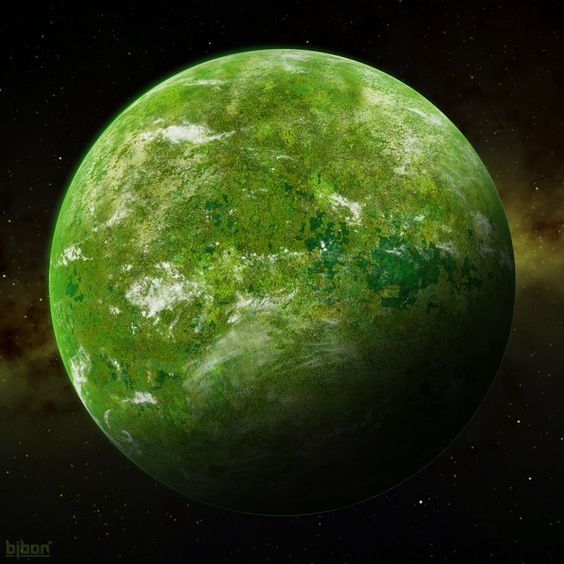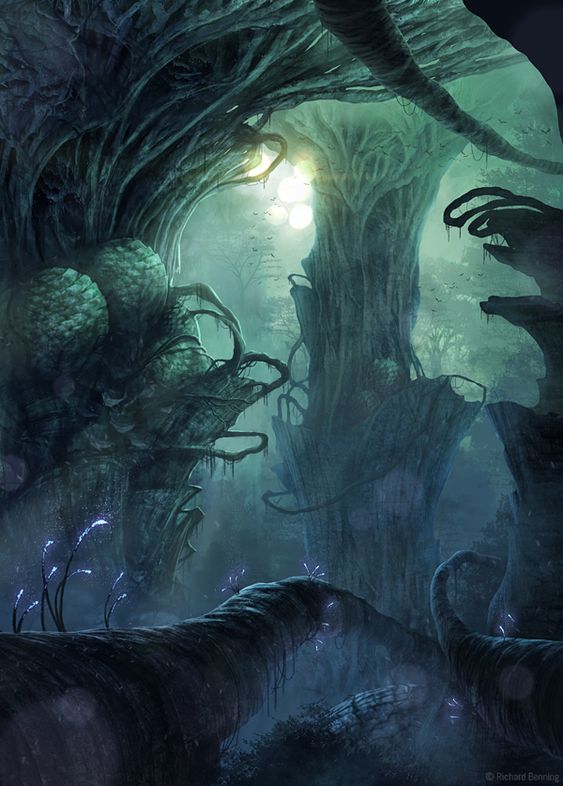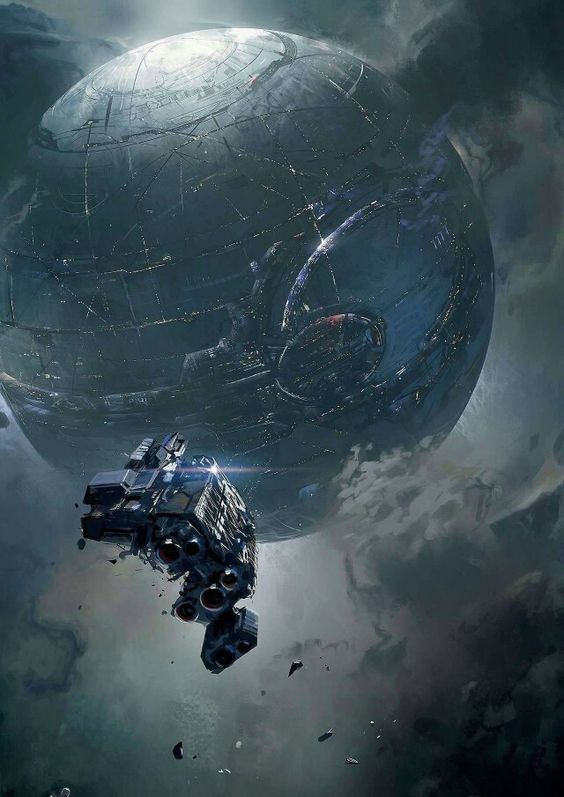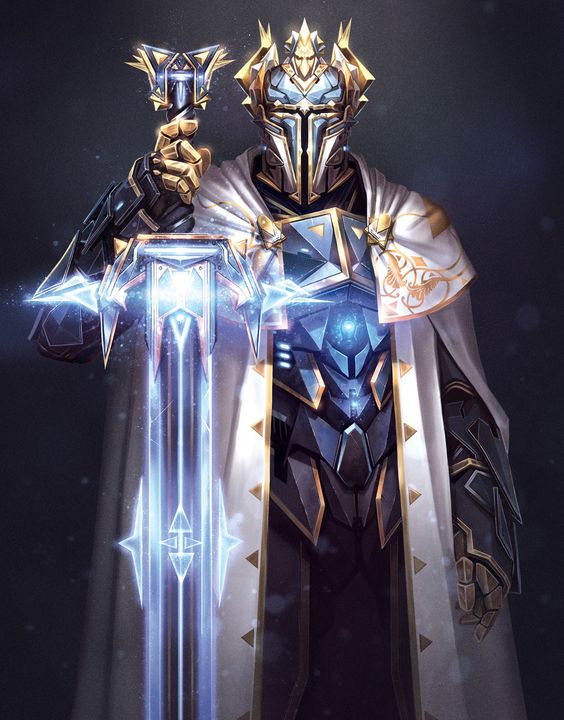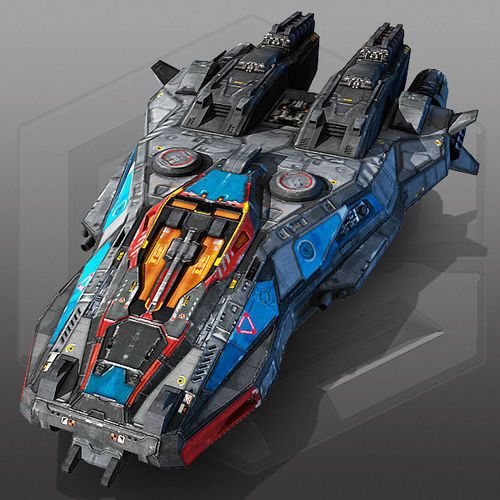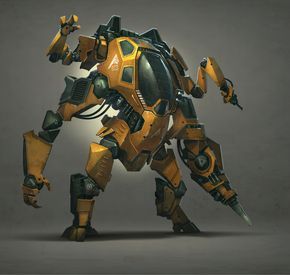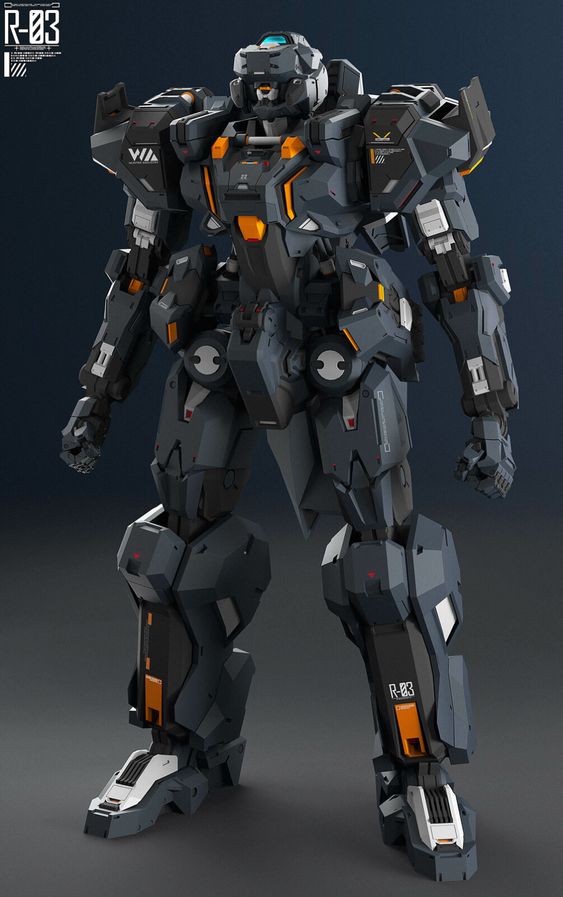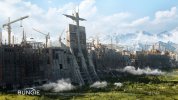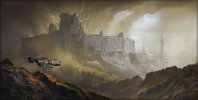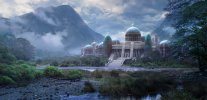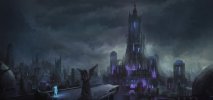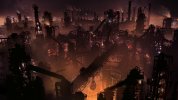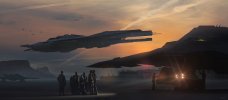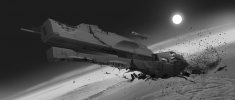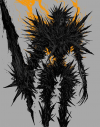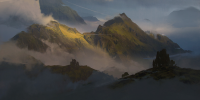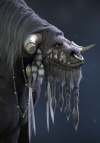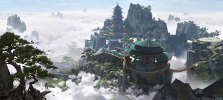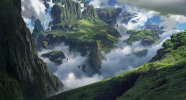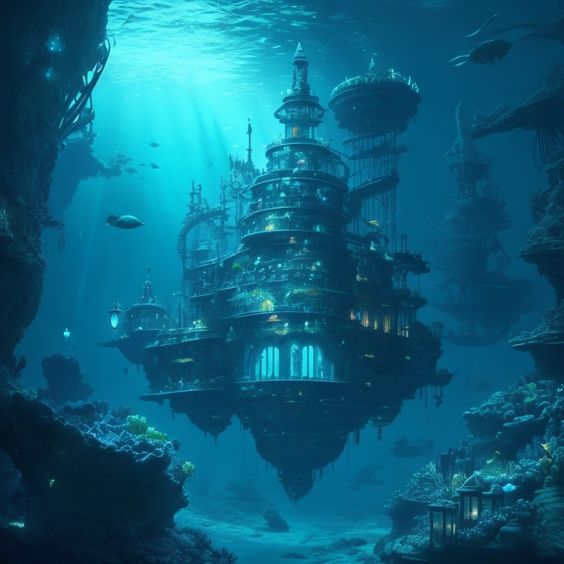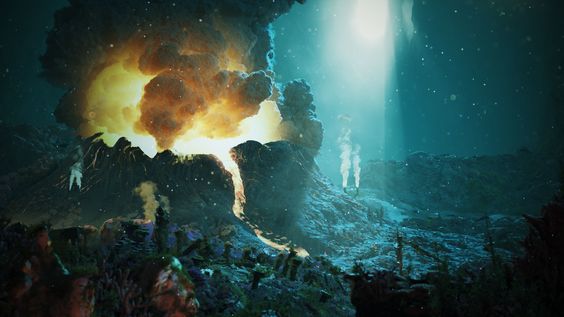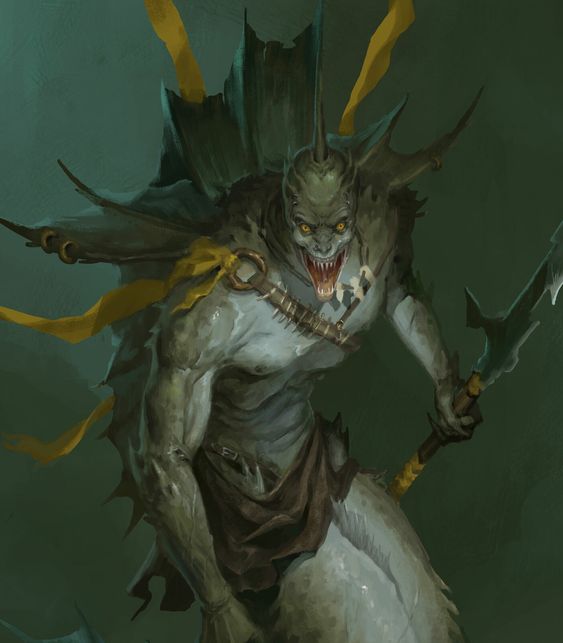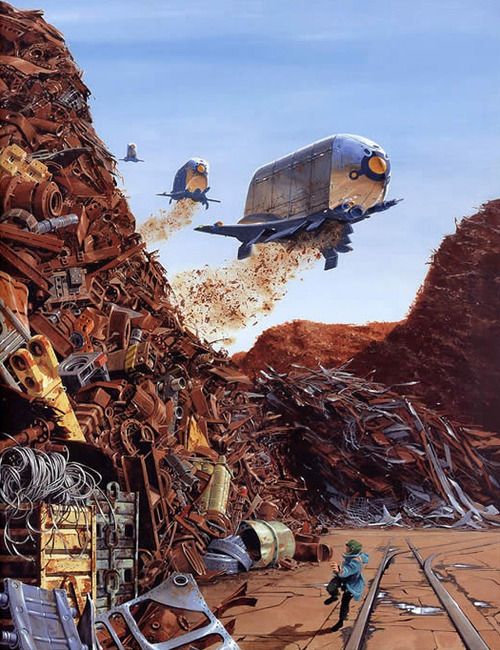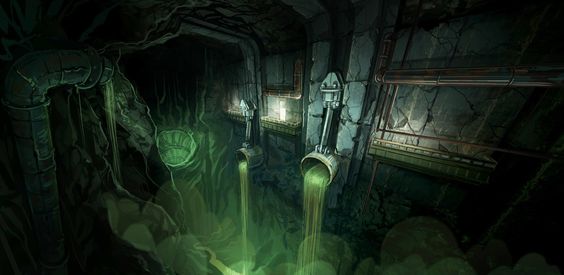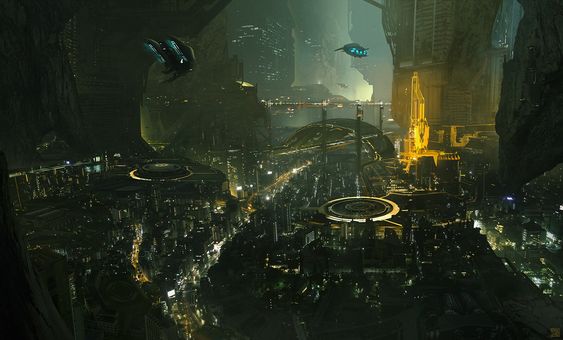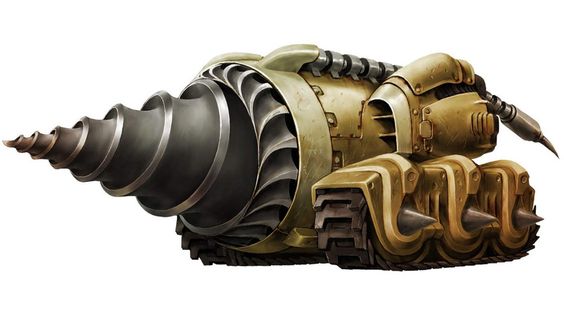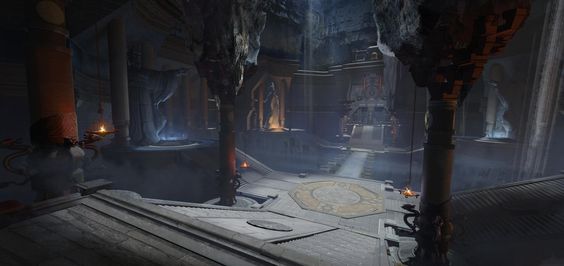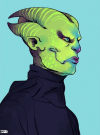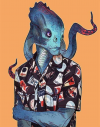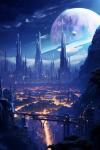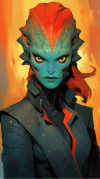egglover
egg

This is the lore thread for the roleplay Cosmic Deep. Here you'll find extra info on the Avian Expedition fleet as well as different races/planets/colonies in the known universe (so far!).

The Avian Expedition is a fleet of starships with one common goal - to explore the hidden depths of space. It was funded and created by many contributing races and factions all throughout the known universe. Despite it's cooperative nature, there is also personal benefit to be gained through this expedition. Some call it the biggest space race in all of history. Everyone who contributes has the chance to gain untold amounts of wealth, power and new technology. After all, deep space is an unclaimed fortune of secrets.
There are many ships part of the Avian Expedition fleet. I will list the most notable ones here for now, however new ones will be added as the story progresses so be sure to check back!
Expedition Leader
Avian Expedition Space Ship (AESS) Condor
The largest ship of the fleet and the hub for all operations.
Reconnaissance Starships
RS Blackbirds Cry
RS Sparrow Wing
These ships have the very important task to scout ahead of the fleet and report back to the leader. They are often sent on intelligence missions.
Battle Starships
BS Golden Eagle
BS Black Kite
BS Grey Falcon
Ships equipped for fighting and protecting the fleet. Small, fast and nimble.
Cargo Starships
CS Sturdy Shoebill
CS Shy Cassowary
Large, sturdy ships hauling important materials, gear and commodities. They should have enough cargo to last a decade.
Research Management Starships
RMS Penguins Flight
Research ships have some of the best equipment of the fleet. They are the ones who are officially documenting the expedition, if you will.

Here will be the space for some of the currently known alien life forms, planets, colonies and their lore. Use this to create your character!

The Avian Expedition is a fleet of starships with one common goal - to explore the hidden depths of space. It was funded and created by many contributing races and factions all throughout the known universe. Despite it's cooperative nature, there is also personal benefit to be gained through this expedition. Some call it the biggest space race in all of history. Everyone who contributes has the chance to gain untold amounts of wealth, power and new technology. After all, deep space is an unclaimed fortune of secrets.
There are many ships part of the Avian Expedition fleet. I will list the most notable ones here for now, however new ones will be added as the story progresses so be sure to check back!
Expedition Leader
Avian Expedition Space Ship (AESS) Condor
The largest ship of the fleet and the hub for all operations.
Reconnaissance Starships
RS Blackbirds Cry
RS Sparrow Wing
These ships have the very important task to scout ahead of the fleet and report back to the leader. They are often sent on intelligence missions.
Battle Starships
BS Golden Eagle
BS Black Kite
BS Grey Falcon
Ships equipped for fighting and protecting the fleet. Small, fast and nimble.
Cargo Starships
CS Sturdy Shoebill
CS Shy Cassowary
Large, sturdy ships hauling important materials, gear and commodities. They should have enough cargo to last a decade.
Research Management Starships
RMS Penguins Flight
Research ships have some of the best equipment of the fleet. They are the ones who are officially documenting the expedition, if you will.

Here will be the space for some of the currently known alien life forms, planets, colonies and their lore. Use this to create your character!
 Human
HumanHome world - Earth
Humans are one of the most abundant and widespread races of the universe. Though they tend to stick to their home galaxy the Milky Way, they are able to thrive in most environments. Intelligent, adaptive and resourceful, Earth Humans have invented incredible ships and technology that are commonly used across the stars. They are known for being imaginative and ambitious, and as such were the first to create sentient Androids. Several of the human colonies include but are not limited to the Luna Colony, Mars Colony and Venus Colony.
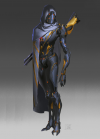
Android
Home world - Anywhere
Though sentient Androids were first created on Earth, they have become so widely made in all parts of the galaxy that their home depends on where they are first given sentience. Each race creates Androids in a different way and no Android is ever the same as another. Despite common fears, they apparently have no desire to destroy life, rather embrace it's chaos and beauty. Often found on starships for their multi-technical capabilities.
Home world - Anywhere
Though sentient Androids were first created on Earth, they have become so widely made in all parts of the galaxy that their home depends on where they are first given sentience. Each race creates Androids in a different way and no Android is ever the same as another. Despite common fears, they apparently have no desire to destroy life, rather embrace it's chaos and beauty. Often found on starships for their multi-technical capabilities.

Chalcidian
Homeworld - Venus
A sapient, parasitoid wasp which emerged within human colonies on terraformed Venus. It converts its humanoid victims
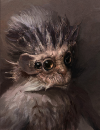 into living hives, producing swarms of drones to serve and defend itself while it acts as the brain of this strange, collective organism. Once feared as the bogeyman of human colonization, the Chalcidian's small population and unaggressive nature eventually earned it begrudging acceptance within galactic society, though tensions with its "parent" species remain palpable.
into living hives, producing swarms of drones to serve and defend itself while it acts as the brain of this strange, collective organism. Once feared as the bogeyman of human colonization, the Chalcidian's small population and unaggressive nature eventually earned it begrudging acceptance within galactic society, though tensions with its "parent" species remain palpable.Zumolka
Homeworld - Sanmagela
Tiny creatures, resembling earth monkeys and standing little more than a foot in height. They are master engineers, constructing intricate mechanical exoskeletons the likes of which would impress even the most brilliant members of
other spacefaring species. They are also an incredibly warlike people, using their brilliant machines for brutal conquest, or to proffer their services as mercenaries in times when their immortal god-queen decides to take a vacation from the bloodstained sands of the front lines.
Homeworld - Sanmagela
Tiny creatures, resembling earth monkeys and standing little more than a foot in height. They are master engineers, constructing intricate mechanical exoskeletons the likes of which would impress even the most brilliant members of
other spacefaring species. They are also an incredibly warlike people, using their brilliant machines for brutal conquest, or to proffer their services as mercenaries in times when their immortal god-queen decides to take a vacation from the bloodstained sands of the front lines.
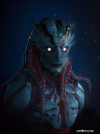 Posonid
PosonidHomeworld - Le Wrileen
The Posonids are an aquatic people, made of many races that live on an ocean planet. Through many violent wars and strife they have become a unified planet, however most of the original cultures of each race were near completely erased to serve their greater nation. With no qualms about slaving and corruption, the Posonids are some of the least friendly races in the galaxy. Though they maintain friendly relations and trade with other races solely to maintain their own status as a galactic powerhouse.
Ensindijee
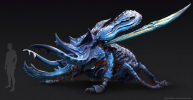
Homeworld - Krostava
The Ensindijee are a tall ancient species of insectoids that dwell on a small world of massive rainforests. They are run by a big Empire ruled by a king and queen and live on the outskirts of known civilization. They are not known to fraternize too much with other races and many accuse them of 'harboring galactic secrets', a claim which none have quite denied. They are able to communicate telepathically with one another. Whether they are able to do so with other races is currently unknown.

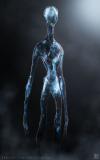
Star Child
Homeworld - ???
A race of mysterious cosmic beings that are birthed from a falling star. One day a meteor crash landed on earth and inside the rock, almost like a cracked egg, was a child unlike anything ever seen. A being made from the cosmos, without a face or a memory. Humans named them star children. They are navigational experts and have no need for space suits or other protective equipment. Not much is known about them as they are extremely rare.
Rindikan
Homeworld - Hephas
The Rindikan are a dutiful people, brought up to believe that they are each individually a part of the people's republic and that only together can they effectively defend themselves from the outside threats of the world. The Rindikan military, as such, is extremely powerful, and the Rindikan people in general have a strong moral philosophy. The Rindican are a species that has traveled far and wide before many other sentient races achieved space flight. They were especially enamored with the warrior cultures of Earth and as such have patterned much of their armor after that of Human warriors. The Rindikan's true form is likened to that of sentient-fuel, like a plasmic connection of brain cells. Upon birth, they are transported into custom made Rindisuits, large mechanical, armored bodies that they live within until the day they die.
Homeworld - Hephas
The Rindikan are a dutiful people, brought up to believe that they are each individually a part of the people's republic and that only together can they effectively defend themselves from the outside threats of the world. The Rindikan military, as such, is extremely powerful, and the Rindikan people in general have a strong moral philosophy. The Rindican are a species that has traveled far and wide before many other sentient races achieved space flight. They were especially enamored with the warrior cultures of Earth and as such have patterned much of their armor after that of Human warriors. The Rindikan's true form is likened to that of sentient-fuel, like a plasmic connection of brain cells. Upon birth, they are transported into custom made Rindisuits, large mechanical, armored bodies that they live within until the day they die.
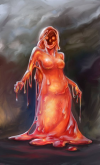
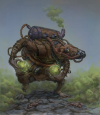
Vleeboe
Homeworld - Vleebolai
The Vleeboes are a flea bitten rodent people native to Vleebolai. It is often rumored that they came upon interstellar travel as a mistake. They have no known government aside from disparate scattered clans whose members barely hold allegiance to one another. They live on taking odd, often dirty jobs. That of mercenaries, smugglers, slavers, and thieves. They make their homes in the seediest parts of the galaxy.
Kalkin
Homeworld - Varmasia
Originally considered a pest species, found aboard ships docking on the resource world of Varmasia. These odd lifeforms consist of a solid core surrounded by amorphous, shapechanging slime, and while initially slow, simple organisms, feeding on starship fuel reserves has caused them to evolve hyper intelligence, with many individuals constructing mechanical limbs for themselves so that they might mimic the humanoid forms of other spacefaring species. Modern Kalkins are dedicated wanderers, taking any job they can upon starships to fuel their insatiable curiosity and drive to explore the furthest reaches of the universe.
Homeworld - Varmasia
Originally considered a pest species, found aboard ships docking on the resource world of Varmasia. These odd lifeforms consist of a solid core surrounded by amorphous, shapechanging slime, and while initially slow, simple organisms, feeding on starship fuel reserves has caused them to evolve hyper intelligence, with many individuals constructing mechanical limbs for themselves so that they might mimic the humanoid forms of other spacefaring species. Modern Kalkins are dedicated wanderers, taking any job they can upon starships to fuel their insatiable curiosity and drive to explore the furthest reaches of the universe.
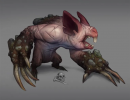 Engreint
EngreintHomeworld - Marient
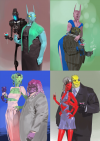
They are a subterranean, slime-skinned race of people. They have no eyes but large sensitive ears like a bat and star-shaped snouts snouts used for finding their way in darkened underground tunnels via echolocation and smell as well as tusks jutting out of their lower jaw. They are quadrupedal and have massive claws on their feet for digging. The Engreint homeworld is inhospitable topside to living creatures. Only underneath the planet can any living species thrive, which is where the Engrients built their civilization.
Zonkoi
Homeworld - Yal Yuan
Yal Yuan is one of the largest habitable planets in the universe, and as a result has the most populated race and most diverse biological make. They are said to be the first beings to discover space travel in the Milky Way and are responsible for the very first contact with extraterrestrial life within the known cosmos. Rich, prosperous and greedy are good words to describe a Zonkoian. Their appearances differ, but most commonly their coarse skin takes on bright colors and patterns that are easily recognizable.
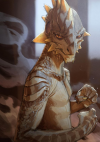
Homeworld - Sanmagela
Reptilian people who live alongside the Zumolka. Despite their sometimes threatening appearance they are said to be kind and loyal, winning an alliance with the Zumolka through their charming wit. The Craedenese tend to live simple, humble lives and as such enjoy jobs in agriculture and the medical field. Most Craedenese are deeply religious and believe in the rules of their Craeden Creed. Uninterested in the politics of the galaxy, they are often mistaken as aloof loners, however their religion dictates that a Craeden must help any being that asks.
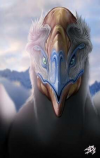
Ji'ki'ko'kri'kan
Homeworld: Kas'kri'suu'li'li
Born to the floating islands formed in the upper atmosphere of a toxic gas giant, the avian Ji'ki'ko'kri'kan are an old race, well-versed in the importance of trade and discourse. They flew out from their world not only in search of more room to support their growing population, but also in search of new markets and commodities to thrill and excite them. To the Ji'ki'ko'kri'kan, the excitement of the bartering process and thrill at discovering a previously unknown resource will forever outweigh the value of any currency.
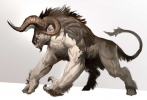
Homeworld: Ahnba Degota
A hulking, muscular race, looking like a cross between a gorilla and a bison. They lack any form of centralized government, dwelling in small nomadic clans. Though quiet and pious by nature, many gulu have been abducted from their worlds for use as mercenaries and laborers. Those who travel the stars willingly do so most often as scientists, or as pilgrims on the search for spiritual enlightenment in other stars.
Ythpiiron
Homeworld: ???
The Ythpiiron are a far-reaching but incredibly rare race of beings that appear across many worlds in mythic or deific roles. They always seem to take on the shape of great monsters (Earthborn would perhaps draw similarities to dragons or other legendary beasts), but depending on the world they inhabit, often look quite different from each other. Despite their differences, there are
commonalities shared between the creatures. First, Ythpiiron are gargantuan in size - depending on the environment of the world, they can be bigger or smaller, but always are the largest creature on the planet. Second, Ythpiiron are sentient and have telepathic abilities, although they do not often deign to communicate - those who have actually spoken with these legendary beings believe that this is not due to arrogance but rather a desire to remain neutral. Third, they wield tremendous power, and feed off the energy of the planet or closest star. The Ythpiiron believe themselves to be guardians, although what they are guarding is a mystery, as is what they are guarding it against. The progenitor of the race has been named as Oyrcthae, and is said to float the space in-between spaces. Although there are a half dozen worlds known to be home to a Ytthpiron, it is believed that there are less than a thousand of the beings in total, spread across the near infinite cosmos. Thus seeing a Ytthpiron, let alone meeting one, will perhaps forever be nothing more than a flight of fantasy for poets and dreamers.
Homeworld: ???
The Ythpiiron are a far-reaching but incredibly rare race of beings that appear across many worlds in mythic or deific roles. They always seem to take on the shape of great monsters (Earthborn would perhaps draw similarities to dragons or other legendary beasts), but depending on the world they inhabit, often look quite different from each other. Despite their differences, there are
commonalities shared between the creatures. First, Ythpiiron are gargantuan in size - depending on the environment of the world, they can be bigger or smaller, but always are the largest creature on the planet. Second, Ythpiiron are sentient and have telepathic abilities, although they do not often deign to communicate - those who have actually spoken with these legendary beings believe that this is not due to arrogance but rather a desire to remain neutral. Third, they wield tremendous power, and feed off the energy of the planet or closest star. The Ythpiiron believe themselves to be guardians, although what they are guarding is a mystery, as is what they are guarding it against. The progenitor of the race has been named as Oyrcthae, and is said to float the space in-between spaces. Although there are a half dozen worlds known to be home to a Ytthpiron, it is believed that there are less than a thousand of the beings in total, spread across the near infinite cosmos. Thus seeing a Ytthpiron, let alone meeting one, will perhaps forever be nothing more than a flight of fantasy for poets and dreamers.
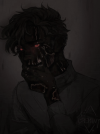 Deimosians
DeimosiansHomeworld: Neraeis
Deimosians were originally human colonists of the world Neraeis. When the world went through its cataclysm, so to did the Neraean Colonists. What exactly happened is entirely up to scientific debate, but what is self-evident is the changes it wrought on the Neraean's, who later came to rename themselves "Deimosians". The skin of all inhabitants was turned to a shades of black and the same became true of their hair and nails, though teeth seem to remain unchanged, and the insides of their mouths and bodies have taken on more greyish and ash colored tones. Their skin is heavily scarred, and their eyes are commonly a vibrant red. Deimosians have a strong warrior culture, and arm themselves in armor that is charred black from heat and fire, along with swords that are the same. They have a deep, complicated history, and the philosophy of many hinges on the idea that "Only the Strong are Deserving".
Last edited:


